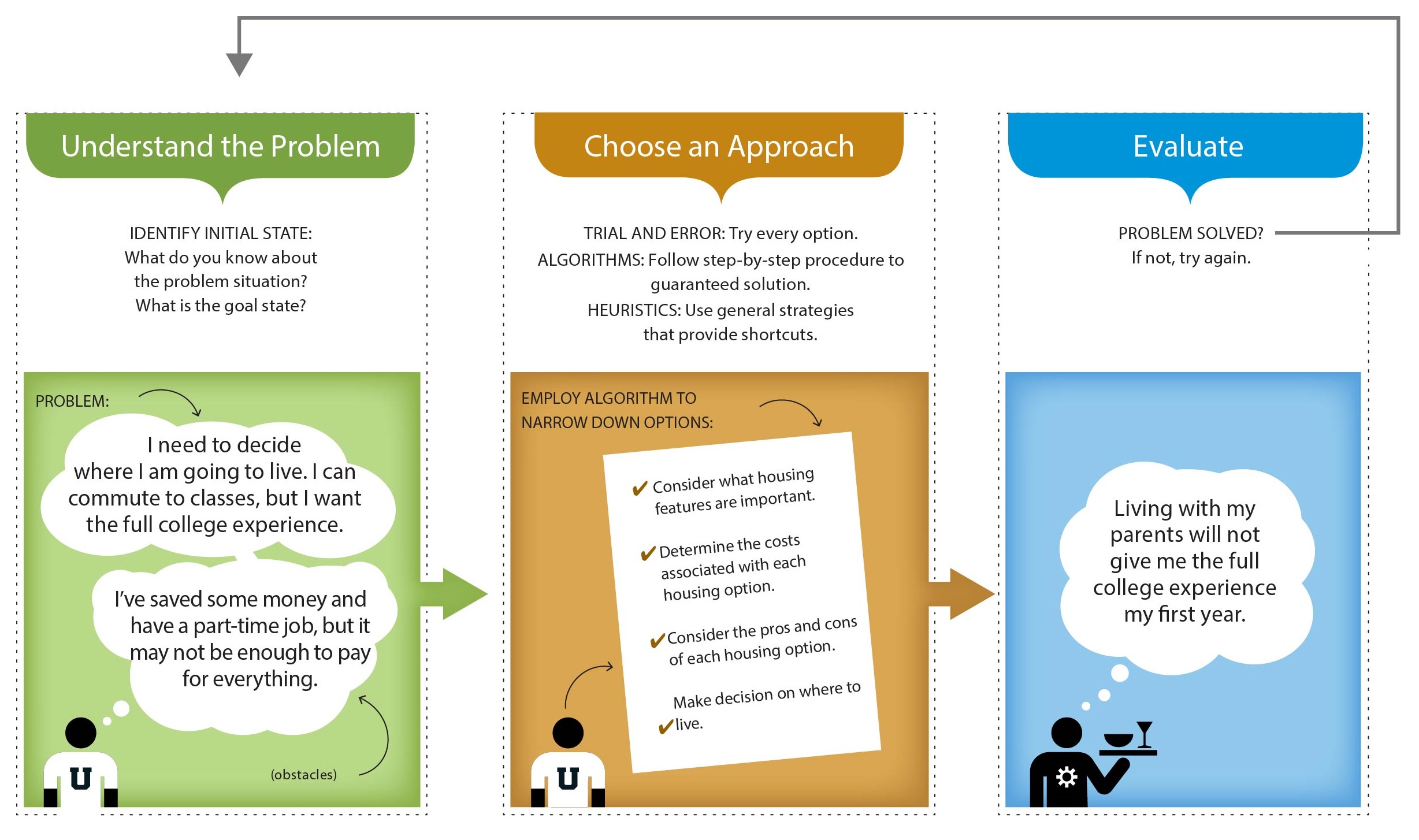7.1

You have just been accepted into your first choice of college. Congratulations! You applied for numerous scholarships and recently found out that you received partial funding. The funding will cover 90% of tuition, but you still need to cover the balance, purchase your own textbooks, and pay your own living expenses. You work part-time for $10 an hour, but have some money saved up that will help to cover expenses.
Now you need to decide where you are going to live! The college is less than an hour from your parents’ home, so you could live at home and commute. But, you want the full college experience and want to live in a dorm on campus. You would also consider living in an apartment off campus. How do you decide?
Carr, K., Kendal, R. L., & Flynn, E. G. (2015). Imitate or innovate? Children’s innovation is influenced by the efficacy of observed behaviour. PCognition, 142, 322–332..
German, T. P., & Defeyter, M. A. (2000). Immunity to functional fixedness in young children. Psychonomic Bulletin & Review, 7, 707–712.
Güss, C. D., & Robinson, B. (2014). Predicted causality in decision making: The role of culture. Frontiers in Psychology, 5, Article 479.
Güss, D. (2011). Fire and ice: Testing a model on culture and complex problem solving. Journal of Cross-Cultural Psychology, 42, 1279–1298.
Isen, A. (2008). Some ways in which positive affect influences decision making and problem solving. In M. Lewis, J. M. Haviland-Jones, & L. F. Barrett (Eds.), Handbook of emotions(3rd ed., pp. 548–573). New York, NY: Guilford Press.
López Turley, R. N., & Wodtke, G. (2010). College residence and academic performance: Who benefits from living on campus? Urban Education, 45,506–532. doi: 0.1177/0042085910372351
Ohbuchi, K., Fukushima, O., & Tedeschi, J. T. (1999). Cultural values in conflict management: Goal orientation, goal attainment, and tactical decision. . Journal of Cross-Cultural Psychology, 30,51–70.







